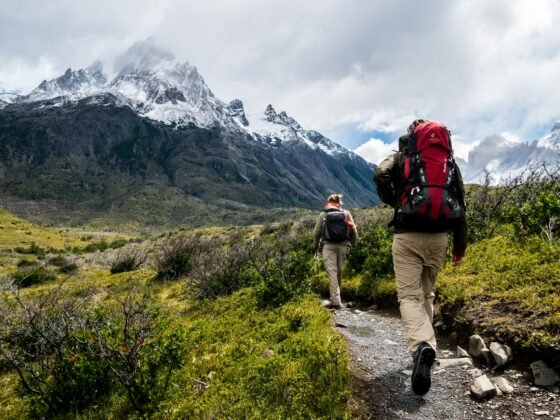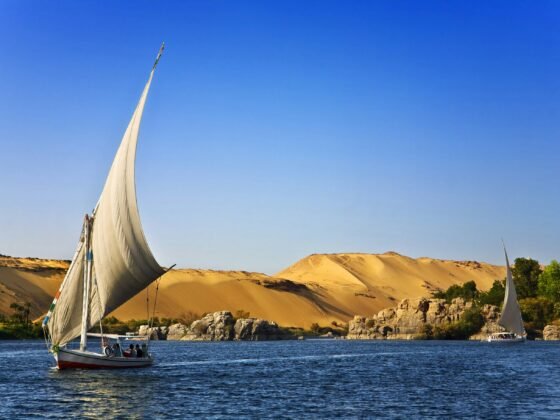Highlights
“Stand on the foot of the world’s highest Mt. Everest at a dramatic base camp.
A moderate scenic and cultural walk through lovely traditional villages.
Enjoy the scenery of lovely picturesque landscapes amidst Snow Mountains.
Walking around the World Heritage Sites of the Sagarmatha National Park.
A scenic adventure to enjoy the treks with a touch of high altitude gain.”
Overviews
The hardest part of Everest Base Camp Trek is the info for trekkers to enjoy the adventure around high Khumbu. Mt. Everest is the highest peak on earth, at 8,848.86 m or 29, 031 feet high, at present height.
In comparison, to 8,848 m, as assumed before, the Himalayan mountains and Everest are growing by a few centimeters every year. Although, the trek to Everest Base Camp leads to moderate walks amidst stunning scenery. But the trekkers need to heed slowly, where altitude is the main factor that can obstruct your adventure holidays.
Nevertheless, the high region of Khumbu and Everest Base Camp gets thousands of visitors in the best seasons. The mass flow of trekkers, mountaineers, and adventurers to Everest Base Camp is increasing annually.
The hardest part of Everest Base Camp Trekking solely depends upon one’s physical fitness and health. The rest of the treks are on moderate scenic trails with some steep uphill to encounter.
But, as you reach the overnight destination, you will be glad that the day is complete. Take a good rest before the challenging walks next day, once you have reached the higher altitude above 3,000 meters.
The best to enjoy trekking around the high-altitude terrains is to take things slowly with a short rest. As well as being positive, it makes you feel good to accomplish the adventure of a lifetime experience. The Everest Base Camp Trekking route follow on the busy trails, encountering groups of trekkers.
The local Sherpa, guides, and porters include the pack animals and the yaks.
The Zhopkyo (crossbreed of yak and cow or oxen) carries the trekkers’ loads of baggage.
The walk comes across beautiful viewpoints, which makes you stop and rest to marvel at the spectacular views of giant snow-capped peaks.
After an exciting moment on daily walks, and then finally, the walk reaches you to your dream destination at Everest base camp.
The Trails to Namche Bazar a Route to Everest Base Camp
To experience the hard part of Everest Base Camp Trekking is to know the routes. About the trail conditions and as well as things to expect during the walks from one designated overnight stop to another.
Most treks to Everest base camp begin from Lukla after flying in from Kathmandu. On the first day, the walks follow a winding path through lovely traditional Sherpa villages.
The route leads to a few exciting bridges above the glacial Dudh Koshi River. To enter the Sagarmatha National Park it is listed as a UNESCO World Heritage Site.
After the walk from Phakding on the second day till lunchtime, the walk is pleasant with few ups and downs. Then one of the hard parts of the adventure begins with a climb to the famous Namche Bazaar, at approx. 550-meter uphill. Namche Bazaar the hub of Khumbu Sherpa and trekkers is located at 3,440 m high, about 2 hours climb or more. Depending upon the trekker’s fitness level, the altitude gains gradually from Namche Bazaar onwards.
During the trails we have many Peaks for climbing like Island Peak Climbing, Lobuche Peak Climbing, Mera Peak Climbing, Ama Dablam Expedition etc.
To Tengboche from Namche Bazar a Route Everest Base Camp
Spending an extra day in Namche Bazaar for acclimatization and local exploration around its scenic viewpoints. The adventure continues from Namche Bazaar, heading higher towards the scenic spot of Tengboche and the colorful monastery.
Tengboche is a picturesque spot surrounded by arrays of snow peaks with views of Mt. Everest and majestic Ama Dablam. The morning walk from Namche Bazaar to the lunch spot at Phunki Tenga is pleasant and scenic, with a short descent.
Afternoon climb for two hours to reach Tengboche, situated at 3,867 m, a climb of approx. 450 meters. From the lunch stop, a lovely walk with a steep climb into the cool shade of rhododendrons and pine forest.
It could be one of the hardest parts of the walks for some trekkers, but taking slow makes the day enjoyable.
From Tengboche to Dingboche unto to Everest Base Camp
After a pleasant overnight with a tour of the monastery, the walk from Tengboche leads to higher ground. On leaving the green vegetation and tree lines, the route heads to the sheer mountain wilderness past Pangboche Village. To reach scenic Imja Tse Valley in Dingboche, a lovely settlement with many good lodges.
The altitude of Dingboche is 4,410 m high, and most trekkers enjoy an extra day for acclimatization. Before the walk leads to Everest Base Camp, a perfect spot for rest days and scenic short hikes.
The walk from Tengboche to Dingboche is pleasant on gradual ups, but the rise in altitude. Makes the walks longer, but enjoyable with the surrounding grand scenery of snow-capped peaks.
The walk from Tengboche to Dingboche covers approx. 543 m, as the cold temperature starts from Dingboche onward.
The Trail to Everest Base Camp from Dingboche via Lobuche
From Dingboche with an extra day for acclimatization, the best ways to enjoy the high altitude journey. Leaving Dingboche as the elevation gains slowly as the walk follows with a slow climb to Thugla.
Then, a steep climb for an hour and then on gradual ups to Lobuche at 4,928 m.
Covering, a distance of 11 km and approx. 518 m gain in height from Dingboche to Lobuche for overnight stops.
The big day begins early in the morning from Lobuche to reach the main goal and highlight to reach Everest Base Camp. The walk is moderate, with short ups and downs to Gorak Shep, the last settlement before Everest base camp. The altitude and thin air make the walk quite tough but enjoyable walking amidst giant mountains. Finally, the adventure leads you to the heart of Mt. Everest, at base camp 5,364 m.
The altitude gains of approx. 336 m from Lobuche to Everest base camp
via Gorakshep. But not so tough, with the short rise in elevation, which makes the adventure more enjoyable.
The Return Journey to Lukla with Climb of Kala Patthar High Ridge
Enjoy the fruits of the hard work of walking on the dry and barren terrain and high altitude areas. Then finally reaching Everest Base Camp, the return journey takes you to one more highlight of the adventure.
A steep and strenuous climb on top of Kalapathar rocky ridge at 5,643 m /18,514 feet. The highest point of the treks, overlooking incredible close views of Mt. Everest and Mt. Pumori. The walk slowly leads to a long downhill back to Lukla via Namche Bazaar.
After an exciting moment on visiting Everest Base Camp and the highest spot of Kalapathar. All the hard effort of walking to Everest Base Camp, in the end, it becomes a great, and mesmerizing experience.
Best Season for Everest Base Camp Trekking
The hard part of Everest Base Camp Trekking and to make it more enjoyable. To plan the adventures in the best seasons of the year and with the itinerary having flexible days. The most favorable and high seasons are spring and autumn/fall. The spring begins in March and ends in May, a lively time for pleasant walks and scenic views. Most days are fine and clear with enough sunshine hours till late afternoon from 6 a.m. to 6 p.m. The next best season is autumn/fall when most days are bright, with sunshine for views and pleasant walks and climbs.
Autumn/fall starts from September to November, one of the high seasons in Nepal for trekking to Everest base camp.
Conclusion
The hardest part of Everest Base Camp Trekking depends upon the trekker’s attitude and fitness level. As well as making the itinerary much longer and having a few rest days for acclimatization.
So that trekkers have enough time to enjoy the grand views and immerse in lovely and impressive local cultures. The hardest part is the gain in altitude, especially the long climb to Namche Bazaar and Tengboche.
The rest of the walk leads to a moderate distance, and trekkers will be well acclimatized. Before reaching the highlight of Everest Base Camp, the hard part of the adventure. Is the climb to Kalapathar for a few hours, but the rest of the walks are enjoyable on the downhill to Lukla.












